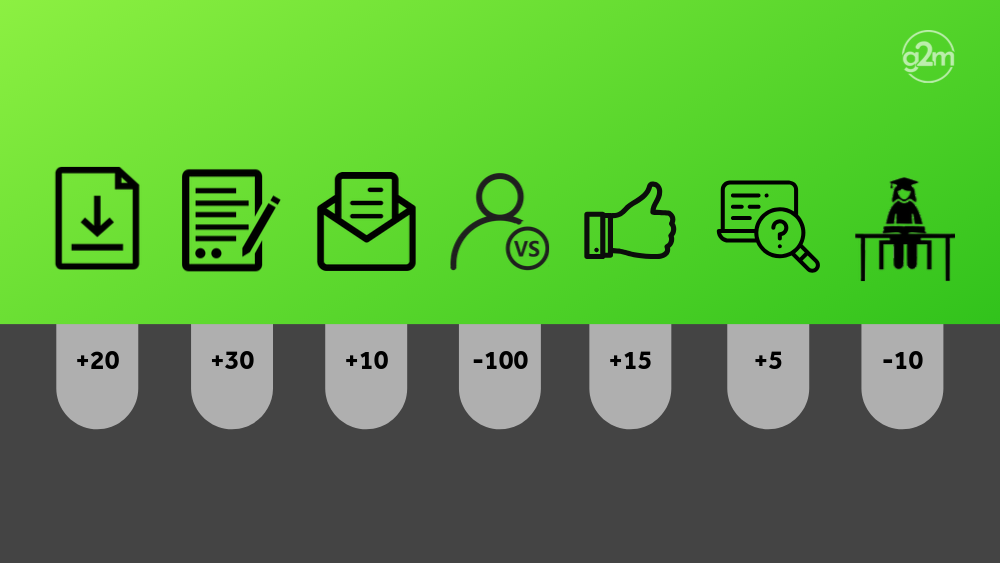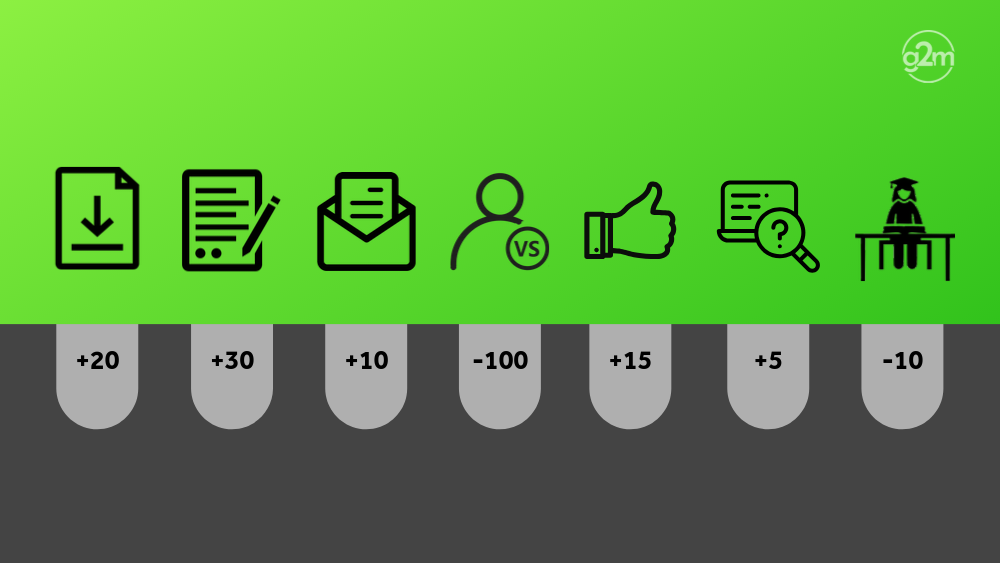BECOME W.I.S.E.R. with Your AI Prompts - A guide for sales managers
Everyone’s wittering on about AI like it’s the second coming. But here’s the rub: if you give it half-baked prompts, you’ll get half-baked answers....
2 min read
Caroline Martinez 22/10/2019 10:00:00 AM


Sales reps need a fast yet accurate way to distinguish hot leads amongst low-value leads. They also need to decipher exactly where the prospect is in the buyer's journey, this is key to be able to say the right thing to the right person at the right time. Enter lead scoring.
Lead scoring is a sales and marketing methodology used to ascertain a prospect's sales-readiness. "Points" are added or subtracted based on sales activity, digital behaviour, and their fit in regards to your business. The higher the numerical value, the warmer the lead.
When lead scoring is set up correctly it can increase business ROI by 68%.
Most lead scoring models are based on a point range of 100. Once a prospect meets a certain numerical threshold, they are set as a Marketing Qualified Lead (MQL) or Sales Qualified Lead (SQL). Each time a prospect engages with your content, or you gather information about their ICP fit they are automatically assigned or deducted points (more on this later).
Each action is assigned x amount of points. Once a prospect reaches a certain threshold (generally 100 points), you'll know that they're warm enough to be contacted by a sales rep.
Note: Every business is different so you can decide which actions show the value of a lead.
There are three basic types of lead scoring behavioural lead scoring, fit lead scoring, and negative lead scoring.
This is based on their engagement with your online content such as your website, blogs, social media posts, emails, downloadable content and CTAs, etc. This type of lead scoring can show you how interested the prospect is in your product or service.
Actions on awareness stage content such as newsletter subscribers, eBook downloads might earn someone a score of 10 for each activity. Interacting with decision stage content like a case study or viewing a product page might earn them 25 points. Requests for demos and "contact us" form submissions are the holy grail, crediting those leads with 100 points and triggering immediate followup from the sales team.
Fit lead scoring is based on how much a prospect fits into your Ideal Customer Profile (ICP).
For example, lets say your company targets b2b businesses with a revenue of 100,000 with 50-100 staff members, and is in the IT industry, and based in Australia. You can assign scores to each of these properties in your lead scoring tool.
We're HubSpot users. In the HubSpot platform, this is done by assigning positive scores to the following company properties: industry, number of employees, annual revenue, and country. HubSpot scrapes this data which means you or the lead doesn't need to fill in the data for you to be able to score them based on fit!
Unfortunately, you can't sell to everyone, and not all leads will be a good fit for your business. This is where negative lead scoring comes in.
Negative lead scoring is used to disqualify people who engage with your content but do not fit your ICP. For example, university students and competitors who download your content for research purposes aren't suitable for your business.
These groups can be identified through a bit of brainstorming and research on your end. For university students, they are usually found to use non-company email domains such as @hotmail, @outlook, @icloud and so on, or fill out your form for downloadable content with the occupation as 'student'.
To identify competitors, you'll need to compile a list with your team and do some additional research. In HubSpot, we would create a smart list using company domain as the identifier so that anyone with the email domain of your competitors will appear on that list. We would then assign a high negative score (-1000) for anyone whose list membership is equal to the competitor smart list.
Setting up your lead scoring is a brilliant way to optimise your time so you can spend less time looking through your pool (or sea) of contacts, and more time selling!
It's best practice to set up a meeting with both the sales and marketing teams to distinguish which actions and which type of contact/company property should be designated a specific numerical value.
Subscribe to our latest news and updates on HubSpot.

Everyone’s wittering on about AI like it’s the second coming. But here’s the rub: if you give it half-baked prompts, you’ll get half-baked answers....

The business world is falling head over heels for AI—and who can blame it? With promises to reduce grunt work, uncover insights, and turbocharge...

Search is evolving - fast. For two decades, SEO has revolved around Google’s algorithm: keywords, backlinks, metadata, and page speed. But with the...